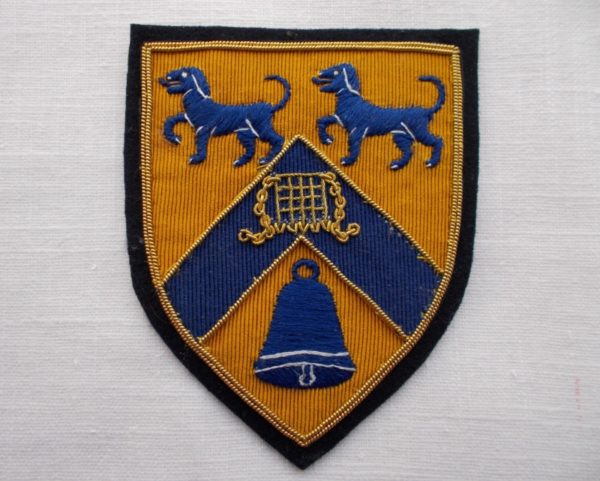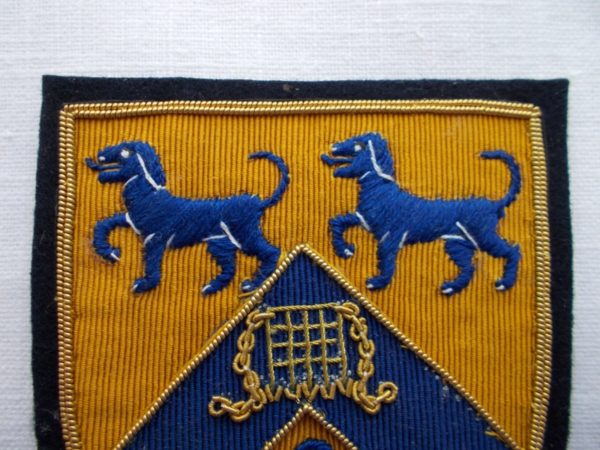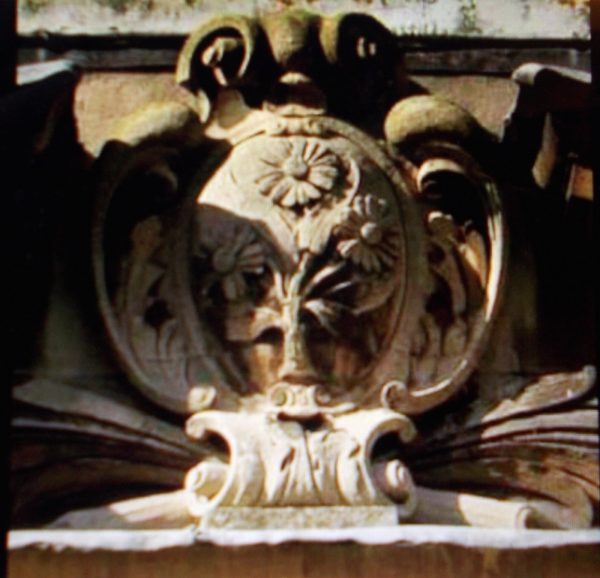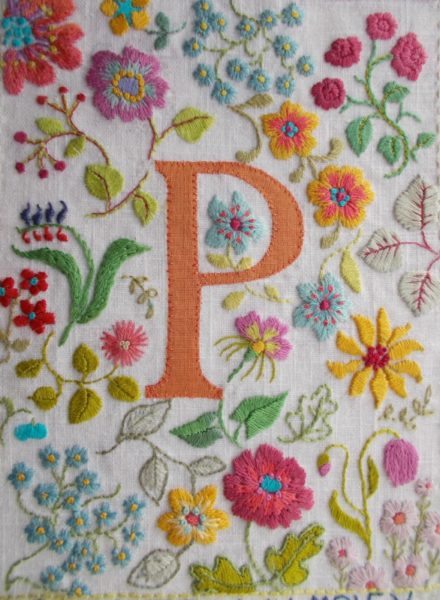
Josef Frank inspired floral initial P (hand embroidered by Mary Addison)
There I was with beautifully laid out sewing plans ready to take me up to the season which cannot be named as we’re really nowhere near it yet, and then I find myself seized with the desire to do another jolly floral initial for the new(ish) granddaughter of an old friend from my London days! My copy of a heavily pictorial book on the textiles of Josef Frank has been far too prominently lying around recently and honestly, I thought, how long can it take to embroider a few flowers on a piece of A5 sized linen? Well, about a week, is the answer.
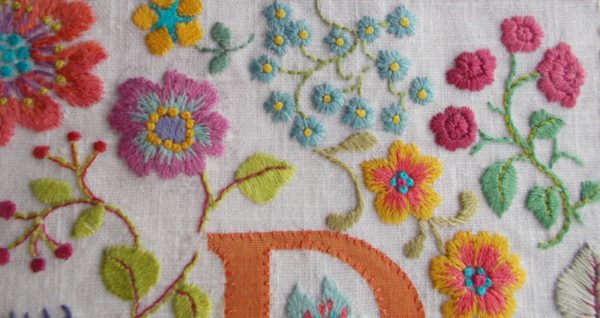
Detail: Josef Frank inspired floral initial P (hand embroidered by Mary Addison)
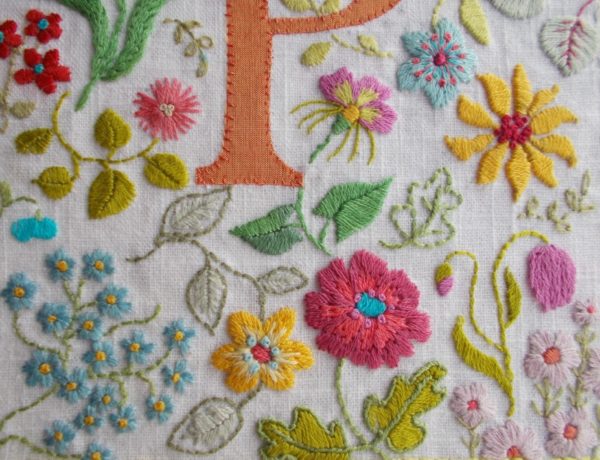
Detail:Josef Frank inspired floral initial P (hand embroidered by Mary Addison)
Just before lockdown, now about 10 days ago, I was in the middle of a mending phase, sewing up all those little holes that appear out of nowhere in winter scarves, gloves and tights, not forgetting holes in useful pockets through which random items disappear never to be seen again. My husband’s speciality is making holes down the front of the lightweight jumpers he wears – probably due to the pipe he faffs about with when he sits outside pouring over his research papers. But now he had reached the point where all his jumpers had little holes – even the newest one bought in the summer – and my card of navy blue mending wool was empty. ‘No more twist ‘ as Beatrix Potter’s Tailor of Gloucester bewailed. And nor was there any in the centre of town – the assistant of John Lewis in Cheltenham sympathised but said they didn’t stock it, in spite of badgering the buyers about its need.
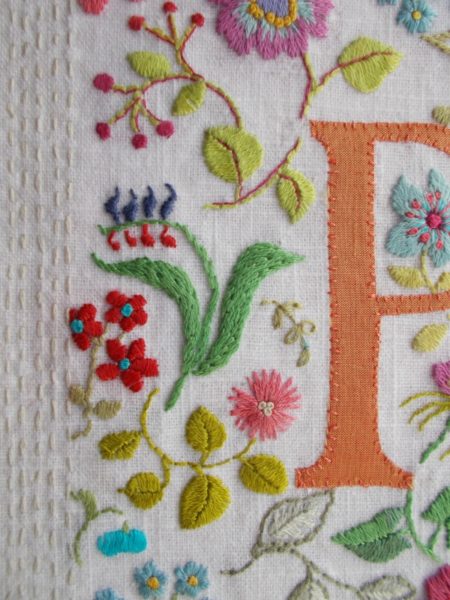
Detail: Josef Frank inspired floral initial P (hand embroidered by Mary Addison)
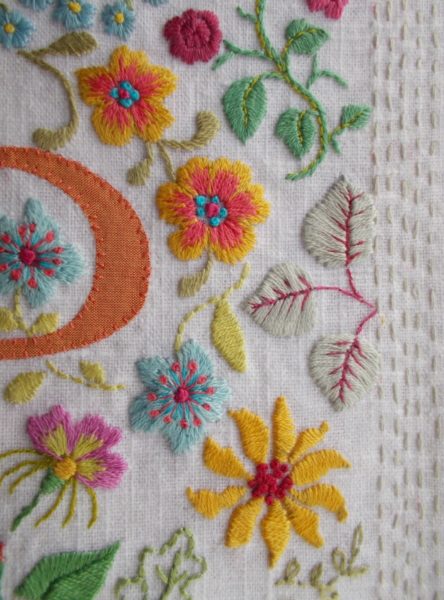
Detail:Josef Frank inspired floral initial P (hand embroidered by Mary Addison)
Well, perhaps all this will change now the Prince of Wales has been singing the praise of mending to the editor of British Vogue in the December issue of the magazine. A great fan of mending, he doesn’t just get his clothes mended, he positively delights in doing so and has gone one step further, setting up a sort of thrift market at Dumfries House where people can take all sorts of things to be repaired, from holey jumpers to electrical appliances. He would like to encourage people to set up small businesses in repair, maintenance and reuse, which is an honourable and decent ambition and it may well work with electrical appliances but I honestly can’t see many people making any money from any domestic mending when you consider how long it can take to darn even a small hole. But perhaps things will change and sporting mended clothes will become not just the right thing to do but absolutely the only thing to do – a badge of honour declaring the greenest of green credentials. Think how attitudes to smoking have changed.
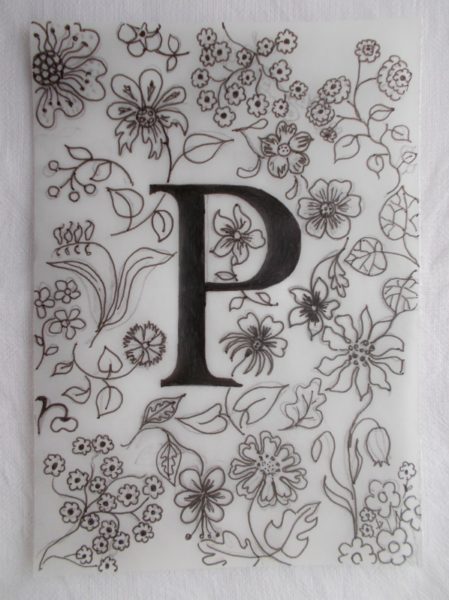
Sketch: Josef Frank inspired floral initial P
But the Prince of Wales has not stopped at mending. To encourage young people to learn traditional skills and crafts, his foundation has started a textile training project in high end fashion and sewing skills. Many students completing the course have been snapped up by local textile firms but the prince hopes that soon the tide will turn on throwaway fashion and there will be a demand for sustainability in all sorts of innovative ways. To this end, The Modern Artisan, a collaboration between the Prince’s Foundation and the Yoox-Net-a-Porter Group, has created a collection for men and women using sustainable textiles. (Each item can be tracked using its digital ID.) Garments, which will be available in the new year, have been designed by 6 fashion graduates from the Politecnico di Milano, and made by 6 British artisans who have done a course in luxury small batch production skills in Dumfries House. The clothes are not cheap, ranging in price from £400 to £1,500, but are all classical, including an update on the camel coat the prince has worn for decades, while other pieces are very like the clothes that fill the Duchesses of Cambridge’s and Sussex’s wardrobe. Hats off to the prince! Let’s hope he’s started something very exciting, whose effect will dribble down to lesser mortals with lighter purses.
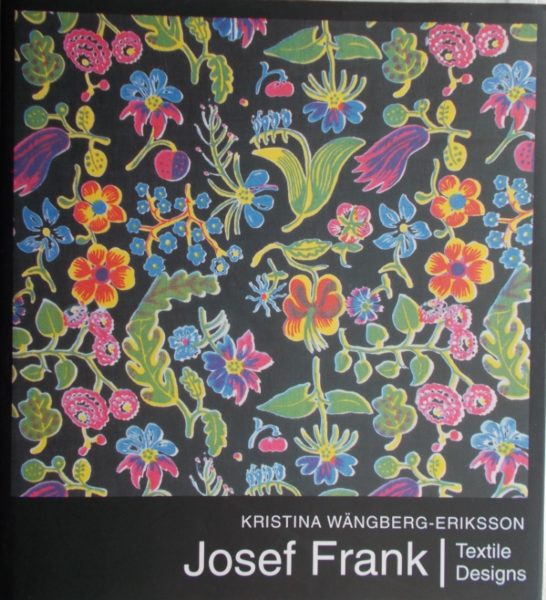
Josef Frank: Textile Designs
Update 24 November 2020
Unable to call something finished until I no longer have it, I decided to make this embroidery into a mini quilt rather than simply mount it on card. Quilting has given the whole thing more texture which will make it stand out in a more interesting way when framed. As I don’t care for bare edges, I finished these off by oversewing them in satin stitch in a dusty turquoise. I can now use one strip of Stitchery Tape to fix the embroidery to a piece of mounting card which interferes least with the integrity of the fabric.
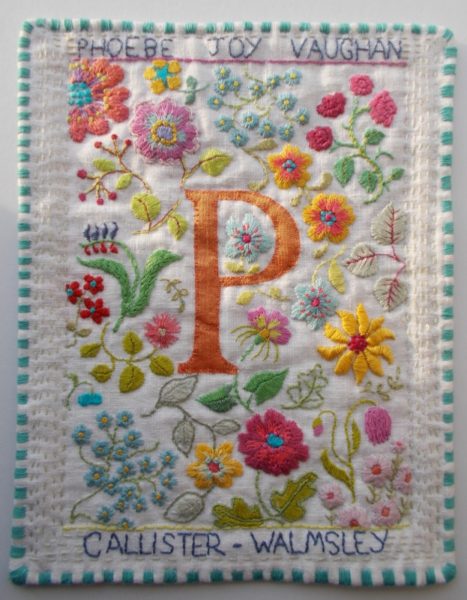
Floral initial P, now quilted and bordered with satin stitch

